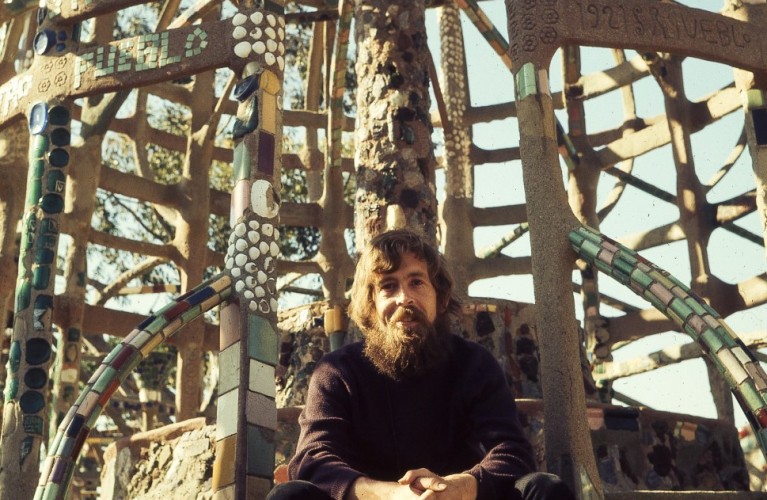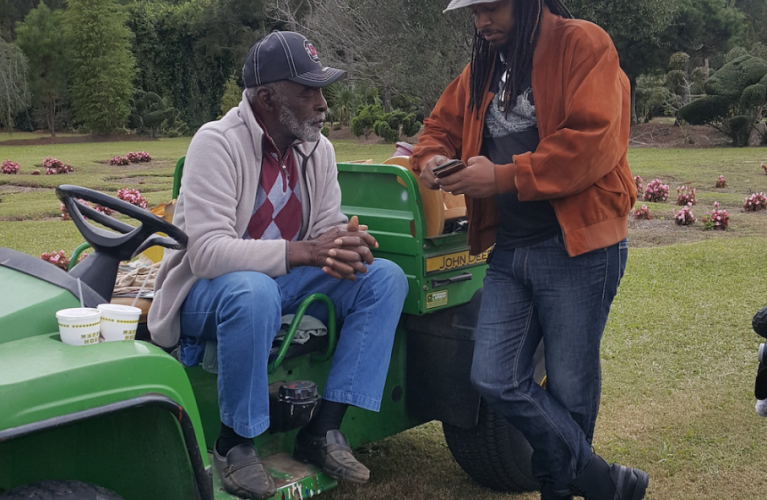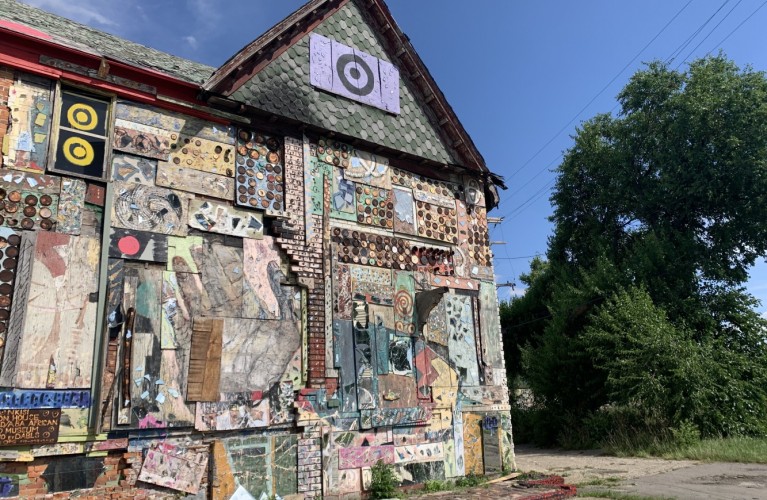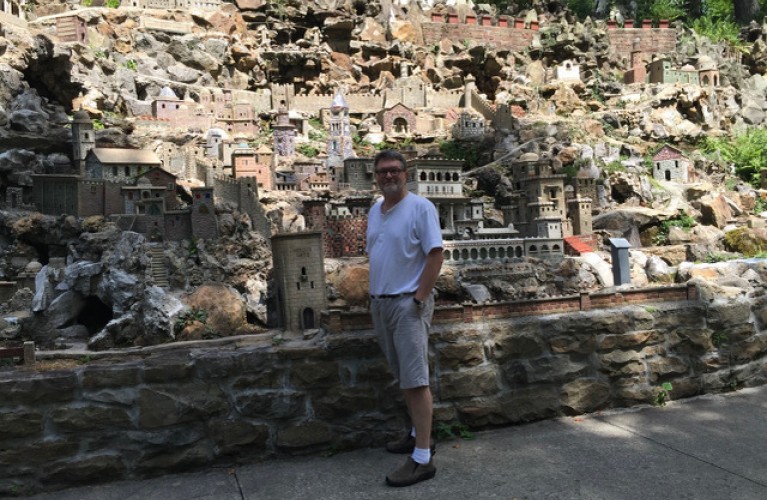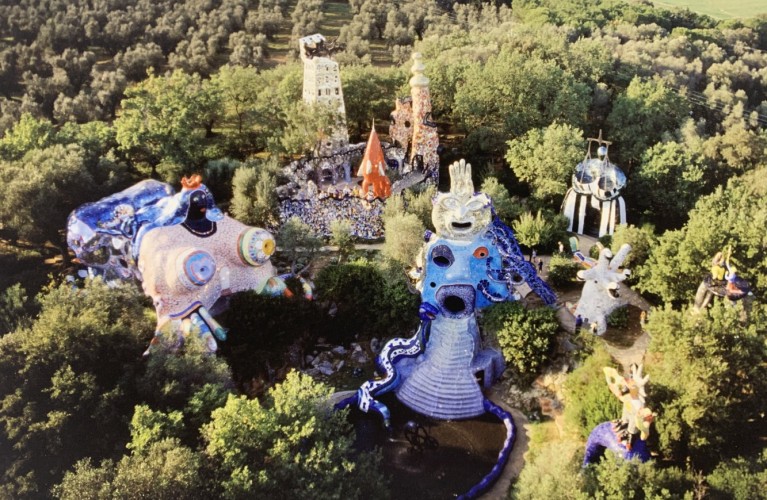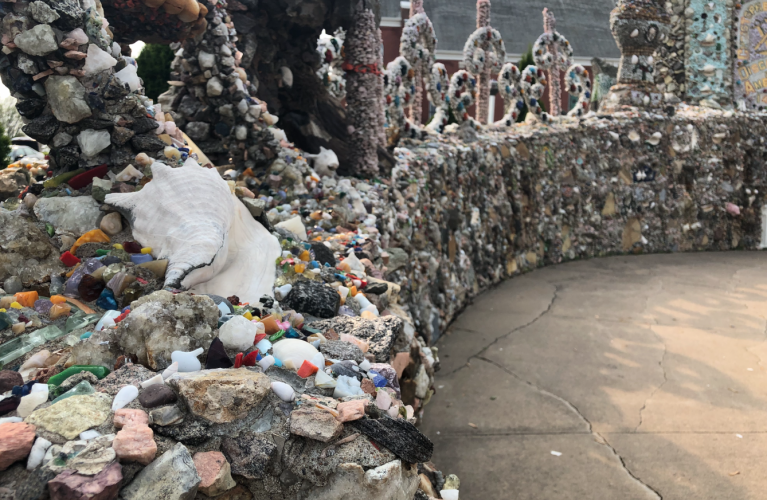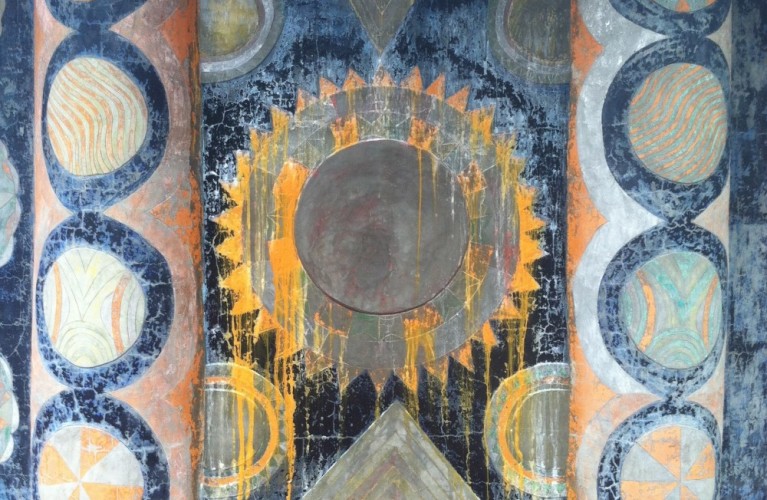Blog
Behind the Lens: Kelly Ludwig
Kelly Ludwig is a designer, photographer, and advocate for art environments and folk artists based in Kansas City, Missouri.When we wanted to know a little bit more about what inspires her to drive cross-country, pull over when she sees something interesting and knock on strangers' doors to learn more—she generously took time to answer our questions and share her experience. Kelly has gifted more than 58,000 images taken on her many road trips across the country as well as 3,636 artist files with research she conducted to the SPACES Archives—thank you, Kelly!
Saving Ron's Place
SPACES recently had the pleasure of speaking with Martin Wallace, a member of a team of people working to preserve Ron's Place, an art environment by Ron Gittins in Liverpool. Wallace is a filmmaker, an International Emmy and Royal Television Society award winner, and BAFTA nominee. He directed the late 1990s series about art environments, “Journeys Into The Outside with Jarvis Cocker," and he is in the process of making a feature-length documentary about Ron Gittins and incredible work.Photo: Martin Wallace
Behind the Lens: Jim Legault
We’re thrilled to share selections from a recent donation of images from photographer Jim Legault. Jim says of his long career behind the lens and on the water, “Two threads have woven my life together–photography and the sea.” He has worked on boats from the Great Lakes to the Caribbean and captained a charter in Fish Creek, Wisconsin, for many years. He’s photographed an impressive array of subjects, including the Mexican Sheertailed Hummingbird (in partnership with the National Geographic Society), the ecological impact of commercial fisheries, and discrete shrines and grottos installed in yards around Wisconsin. To learn more about Jim’s work, please visit his website www.jimlegaultphotography.com. Jim’s donation to SPACES includes images from the early 1970s of Fred Smith’s Wisconsin Concrete Park in Phillips, Wisconsin; Albert Zahn’s Birds Park in Baileys Harbor, Wisconsin; and Sabato Rodia’s Watts Towers in Los Angeles.
Growing a Legacy: How Pearl Fryar Continues to Nurture His Vision
It has been several years since Pearl Fryar has been able to complete the demanding physical labor required to maintain his sprawling topiary garden, and now a group of organizations have come together to support Fryar and the future of his life’s work. After a community member called the Executive Director of the McKissick Museum at the University of South Carolina Jane Przybysz to report the garden’s decline and ask how her institution was planning to help, she immediately got to work. She began by seeking grant funding to support bringing the living sculptures back to their former beauty and creating a consortium of organizations to get involved in this ongoing effort, including the Atlanta Botanical Garden, the WeGOJA Foundation (formerly the South Carolina African American Heritage Commission), and the Garden Conservancy. After some funding was secured earlier this year, a team was hired to begin work on the garden.
Out of Office: Detroit
After more than a year of virtual travels, I had the distinct pleasure of sneaking in a trip to Detroit this summer – post-vaccine and pre-Delta exploding across the country. Detroit is a cultural destination widely appreciated by seekers of U.S. automotive history, Diego Rivera’s populist murals, the music of Motown, and more. Lesser known, perhaps, is the city’s incredible wealth of artist-built environments – each of which helps tell the story of this dynamic and complex American city.
Interview with John Foster: SPACES Board Emertius
For the last 35 years, John Foster has been an educator, graphic designer, painter, and photographer and continues as a passionate collector and scholar of photography, folk art, self-taught art, and art brut. Art & Antiques Magazine named the Foster collection of vernacular photography as one of the Top 100 Art Collections in the United States. He and his collection have been featured in magazines and newspapers ranging from The New York Times, Harper’s, Raw Vision, and more.
The Orange Show Archives with Cody Ledvina
Cody Ledvina is an artist and archivist currently living in Houston, Texas. Before taking on building the archives at the Orange Show Center for Visionary Art in Houston he was the Archivist at the Museum of Everything in London. He briefly details the Orange Show's history and highlights the joy of building an archive from 40 years of institutional memory through photos and documents.
Modern, Patriotic, and American: The Dickeyville Grotto Through the Lens of Ornamentation
SPACES is thrilled to share the following Story Map regarding the creation of the Dickeyville Grotto by Dr. Emma Silverman. Emma is a Mellon Public Humanities Fellow in Monuments and Memory with the National Park Service. She is currently developing a book manuscript on the Watts Towers in Los Angeles that examines how the site was built by a self-taught immigrant and claimed by multiple publics including modernist artists and the African American community in Watts. Emma has also collaborated with public partners to preserve cultural sites through research, oral history, and digital mapping projects. She earned her Ph.D. in the History of Art from the University of California, Berkeley and previously taught as a Visiting Assistant Professor at Smith College.
Seeking the Source: Charles Fowler on Pasaquan
Charles Fowler is the caretaker at Pasaquan, the art environment created by Eddie Owens Martin (aka St. EOM) from 1957 to 1986 in Buena Vista, Georgia. He first began working at the site in 2016 as a preservation intern for the Kohler Foundation. For the past four years, he has been an employee of Columbus State University (the steward organization of Pasaquan) and Chair of the Special Events Committee for the Pasaquan Preservation Society.

